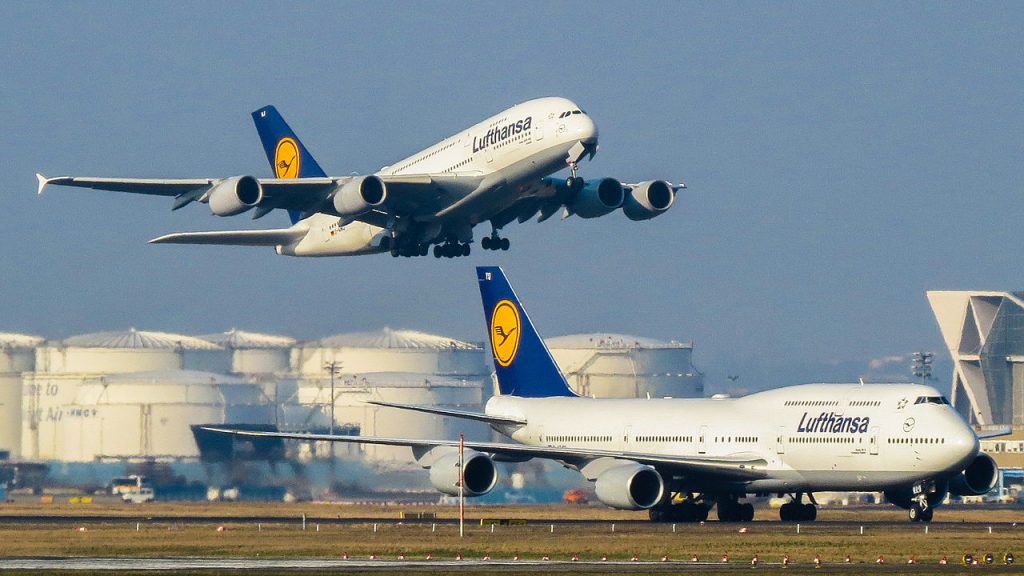Aviation has grown a lot with the advance of technology, making it possible to build large airplanes that can safely carry a large number of passengers from one place to another. In a world where globalization and the desire to visit other countries has become so normal, airplane manufacturers have adapted to create airplanes with the capacity to carry large numbers of passengers, but why do airlines eliminate the largest airplanes they own?
Contents
Talking about history
In the 1960s, the air industry was growing in such a way that short and long-distance flights began to have great demands, that is why by the year 1970, the Boeing industry, created the 747, an airplane capable of carrying 500 people and having two floors where they could have several categories of passengers, thus fulfilling with only one flight the great demand that existed at that time.
The Boeing 747 has evolved over the years to be able to carry large flows of passengers at a lower cost, and that is why Boeing’s main competitor, the company Airbus, began to design an aircraft capable of carrying a larger number of passengers at a much lower cost than its competitor in 1991. However, it was not until 2005 that the first flight of this aircraft, the A380, could be seen, because with technological advances an aircraft capable of carrying 853 passengers could be created.
Beginning of the decline of large aircraft
Since commercial aviation began to be used, certain rules or regulations have been created that make this branch of transport safer, which is why regulation was made that prevented planes from being able to fly 100 miles away from any airport, where no two-engine plane could cross the Atlantic. This is why the 747 arrived, a four-engine plane that gave airlines a great deal of autonomy and great benefits because it carried many more passengers than the conventional planes that existed at the time. If you want to know more about the regulatory changes in air safety, you can read Why have changes been made to aviation safety?
This regulation was called the 60-minute-rule, so if an aircraft wanted to make long flights it had to have several stops or simply have a route where it was not separated from the airports more than stipulated. But with the passing of the years and the improvements of the engines this rule was modified, in such a way that a certification called ETOPS (English acronym of Extended Operations, previously Extended-range Twin-engine Operation Performance Standards) was reached, which allows 2 engine aircraft to perform long-distance flights.
Problems with large aircrafts
The airlines once thought that the capacity these planes had due to their size would bring great economic benefits to their companies since fewer flights would be made and the cost per passenger would allow them to mitigate the expenses caused by the movement of these majestic aircraft. The first problem was to adapt the airports so that these aircraft could embark and disembark passengers efficiently, as well as to reinforce the floor so that there would be no problem due to their weight.
All of this was successfully achieved, but the companies that designed the engines thanks to the technology created more efficient engines. In addition, companies such as Boeing and Airbus focused on creating 2-engine aircrafts capable of carrying more passengers at a lower cost, which made these large aircrafts inefficient because they flew with empty seats. You can learn more about one of Boeing’s twin-engine aircraft in the Boeing 737 Max and its problems.
Fuel price increases, as well as environmental standards, which seek to reduce polluting effects on the environment, have led to the need to create much more efficient engines, which makes 4-engine aircraft more of a problem than a benefit for airlines.
The Covid-19
With the arrival in 2020 of the covid-19 pandemic, many airlines have seen the problem of declining passenger flows, either because countries are preventing flights or people are simply not buying tickets to prevent them from becoming infected.
This is why airlines such as British Airways, Lufthansa, Emirates Airlines, started eliminating their large fleets of large planes to simply keep the new generation planes, which generate a lot of profit instead of expenses.
What do you think about this subject? Do you think we will stop seeing these big planes in a short time?
If you have any doubt or question you can contact us or write your query in the comments section below.
Image by Kiefer via Wikimedia Commons under Creative Commons license.
